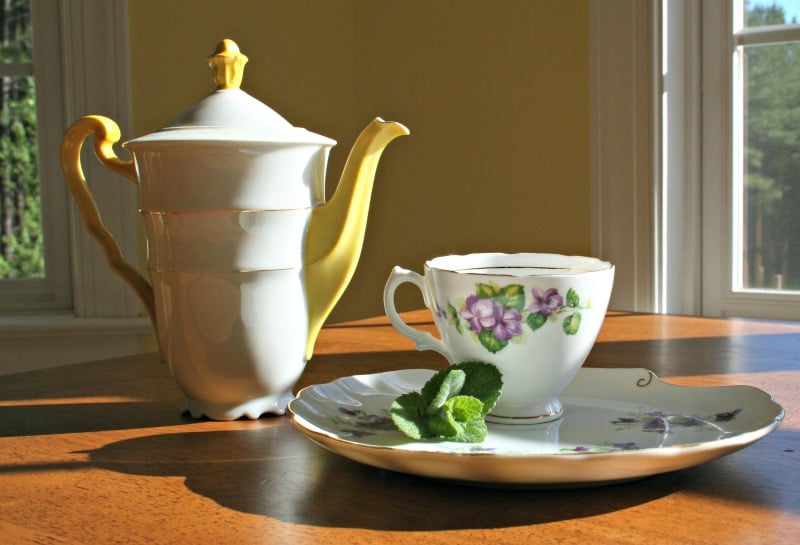Make the perfect cup of herbal tea, right from your own garden! In May, I gave two free talks on how to grow, harvest, dry, and create your very own herbal teas. This lecture proved so popular that I recorded the narration and uploaded it to YouTube.
You can view it below:
Supplies to Make Your Own Herbal Teas
To make the perfect cup of herbal tea, you’ll need herbs. You can grow your own herbs or purchase dried herbs. I recommend Mountain Rose Herbs for high-quality dried herbs. They sell both herbal extras and dried herbs. You can purchase premade tea blends or the ingredients to make your own. (We are an affiliate and make a small commission on their products if you purchase them after visiting our site).
For tea-making supplies, you can use:
- Tea ball: A tea ball is a metal ball or cup with a screw-on lid and perforations throughout the metal to brew tea. You spoon herbs into the tea ball, screw on the lid, and submerse it in hot or boiling water to brew tea.
- Reusable tea bags: These are cloth bags with a drawstring top. Spoon the herbs into the bag, pull the string, and use it to brew tea. When you’re done, turn it inside-out to push the herbs into the compost bin, rinse it under the sink, and hang it up to air dry.
- Self-sealing tea bags: These are a very handy device especially if you are making teas to give as gifts! Simple spoon herbs into the paper sleeves and seal the ends with a hot iron.
PRO TIP!
To make the perfect cup of herbal tea, place your herbal tea in a cup, pour boiling or almost-boiling water into the cup, and cover the cup with a saucer. Let it steep for 5 to 10 minutes. The saucer prevents the essential oils and flavors from evaporating so that the flavors return to the tea via steam. Stronger, better herbal teas!
Herbal Tea Resources on Home Garden Joy
Growing and making my own herbal tea blends is one of my hobbies and I love sharing it with you! Here are past articles I’ve written that will also help you make your own herbal teas.
I hope you’ve enjoyed this little introduction to growing, harvesting, and enjoying herbs for tea.






[…] Herbal teas aren’t just the simple, single-flavor teas you find in the store. Mint is always a popular herbal tea, but you can mix and match many culinary herbs into teas. Sage, for example, and lemon balm, make a tea blend that was popular in the late 1700s. I like to mix chamomile and mint, such as apple mint. Be sure you know which herbs you can use for teas before experimenting. […]